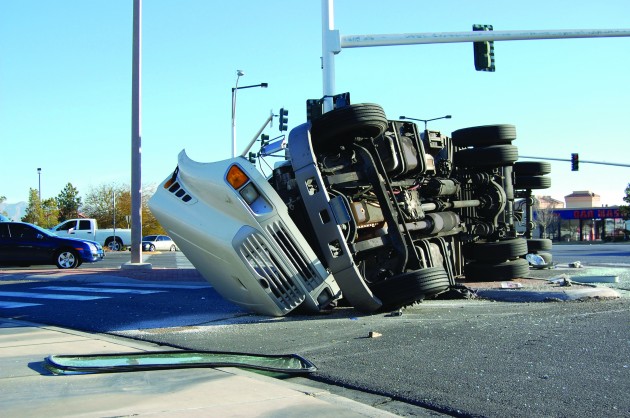Profitability: Cash-saving crashes
Accidents are expensive: they drive up insurance rates, force unscheduled downtime, delay shipments and incur repair bills. But if handled properly, they can also become future money-savers.
Carmine Benedetti is a health and safety consultant and a trainer. He is also one of the presenters at the Fleet Safety Council’s 23rd Annual Education Conference, and it’s at that conference where he intends to teach attendees how to investigate accidents with an eye to preventing future incidents.
Typically, accidents are investigated from the perspective of what Benedetti calls “chargeability”—discovering who is at fault and what highway traffic code violations can be brought against that person. When he looks at an accident, however, he views it through the lens of preventability: what can be learned from the circumstances to help drivers avoid getting into similar situations in the future. 
“You are really investigating the same type of information but what you are trying to do is ensure you get the entire picture. That really is the key, and it’s what is often missed—getting the entire picture.
“Determining preventability as opposed to chargeability, what you are really trying to do is look at the collision from both perspectives—in other words, what could have been done to prevent this collision?”
In order to get a complete view of the big picture, Benedetti says first everybody on the team needs to be prepared for the possibility of an accident. They must have been given the information about how to act and react.
“It’s unfortunate, because it’s the type of information you have to prepare for, but you never want to use. If truth be known, the whole idea is to never have to investigate collisions. That would be the ideal situation, but we do know they do occur, so being prepared for that investigation is paramount.”
Benedetti adds drivers can often serve as part of the investigative team, but to be successful they need to know what is required of them. They need to understand that evidence should be gathered and perspectives need to be considered. As an example, he said when they’re considering braking distances drivers should determine what was in the line of sight before the collision point.
“Drivers are sometimes given cameras to take photographs of the scene, but they don’t really know what to look for or what to take pictures of, so they will take pictures of the side of their truck and they will take pictures of the potential damage without providing reference points with regards to where they stood or how big an object is. Even something as simple as placing a pen in the picture will put perspective to it, in terms of the distance or size,” he explained.
Once all of the information is collected about the accident, then it’s up to the organization to put it to good use via defensive driving programs, changes to internal communications policies, or updated training methods.
“In many cases the dispatcher is not often involved in the driver training side of the equation, but the dispatcher can play a big role in ensuring preventability elements are put into place simply by communicating. When a driver comes in and says, ‘roads are closed off in a particular area and there is a lot more congestion,’ the dispatcher should automatically let future drivers know ahead of time what the expectations are. So the dispatcher is somebody who could be involved and that could be one of the recommendations: identifying who in your company has an impact on your driving. Take a look at those recommendations from a broader perspective than simply saying, ‘we need to train our drivers a little bit more.’”
Benedetti says his Fleet Safety Council presentation will be more like a workshop, as he intends to provide participants with actual accident data and walk them through the process of developing recommendations they can take back to their companies and implement. That way they can start getting the economic benefits that come with heading-off future accidents.
“I like to say the preventability element is always a money-maker,” says Benedetti.
“We know safety a money-saver. Safety doesn’t have to cost. It should be built into the process. I chuckle when I see videos with titles like ‘safe lifting’ or ‘safe driving’ because what other way do you want to do it? Whether it’s driving or lifting, the process should be done in a safe fashion, so safety isn’t really separate. It’s definitely a money-saver, no question about it.”
Have your say
This is a moderated forum. Comments will no longer be published unless they are accompanied by a first and last name and a verifiable email address. (Today's Trucking will not publish or share the email address.) Profane language and content deemed to be libelous, racist, or threatening in nature will not be published under any circumstances.